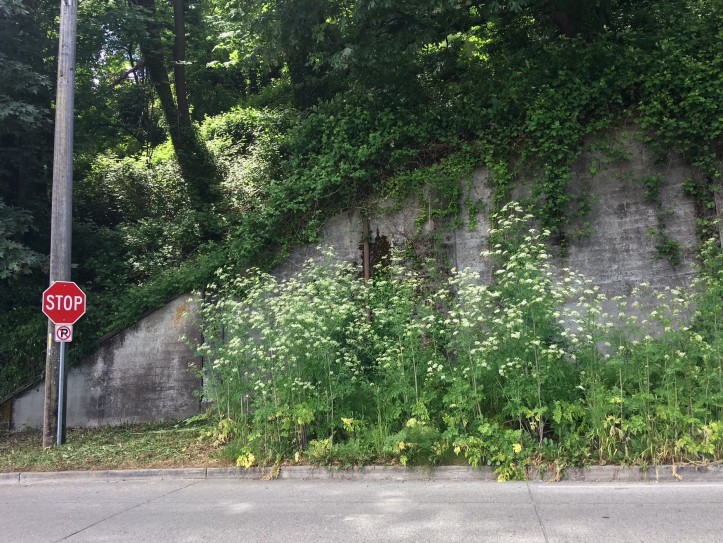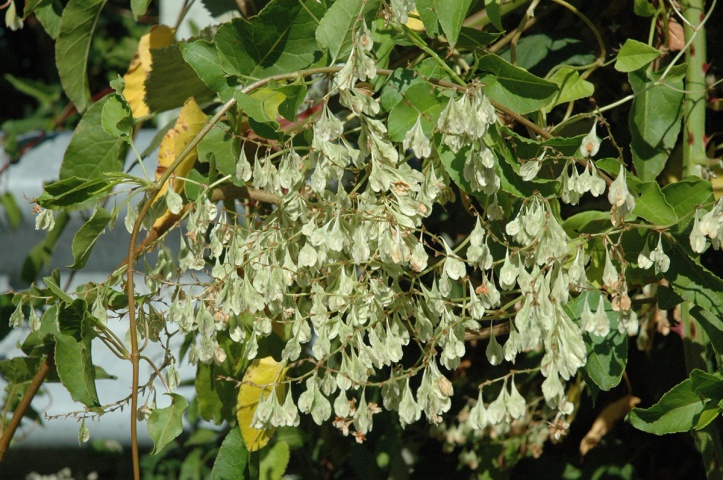At the 2019 Weed List Hearing held on January 23, the King County Noxious Weed Control Board added poison-hemlock to the list of regulated noxious weeds for King County, with control required on public property and public rights-of-way in cities and unincorporated areas throughout the county. On private property, poison-hemlock control isn’t required but it is strongly encouraged, especially where there is potential for exposure (such as farms, schools or gardens) or where there is a risk of plants spreading to other properties.
The King County Noxious Weed Control Program field specialists will be on the watch for poison-hemlock and will notify property owners about infestations as well as provide advice on control methods. Because the plant is highly toxic, gloves should be warn when handling this plant and all plant parts should be disposed of in the garbage or contained where there is no risk of spread or accidental exposure. Identification and control information is available on the King County website or by contacting the Noxious Weed Control Program at 206-477-9333 or noxious.weeds@kingcounty.gov.
People are encouraged to report poison-hemlock locations on public lands and roadsides so the noxious weed program can make sure the correct agency gets the information in time to stop it from spreading. Reports can be made by using the online Report-a-Weed form or by downloading King County Connect, a new King County smartphone app available for Android and Apple devices. There are many plants that look like poison-hemlock, especially when it is small, so please include photos of stems and leaves and provide a detailed and accurate location description.
Poison-hemlock (Conium maculatum) is a Class B Noxious Weed in Washington and previously had been on the non-regulated noxious weed list for King County. Poison-hemlock is very toxic, spreads quickly by seed, and poses a public health threat, especially in areas with public access where people might confuse it with edible plants that it closely resembles.
For more information about poison-hemlock and the King County Noxious Weed List:
- Poison-hemlock identification and control
- Poison-hemlock (Conium maculatum) April 2018 Weed of the Month
- King County Weed Board to consider poison-hemlock status change at 2019 Weed List Hearing

Also new for 2019, the Board added two species to the King County Weeds of Concern List, silver lace vine and rough chervil, two introduced species that have escaped cultivation in King County. The Weeds of Concern list is an educational list of non-native plants that have become invasive in King County but are not on the State Noxious Weed List. The King County Weed Board recommends control of these plants in areas being restored to native plants or where they are creating a negative impact. Click here for the complete King County Noxious Weed List.
Silver lace vine (Fallopia baldschuanica, syn. Polygonum aubertii) is a perennial, climbing vine that is closely related to knotweed. It is typically grown on fences where it can look quite attractive. However, it grows quickly and aggressively and can overwhelm other vegetation and climb up even tall trees. It spreads by seed, cuttings and rhizomes and should never be discarded in a natural area where it can spread undetected.




Rough chervil (Chaerophyllum temulum) is a biennial plant in the Carrot Family that is toxic and spreads quickly by seed, often along forest edges or other partly shady areas. It is sometimes confused with similar weeds such as wild chervil and poison-hemlock, which it resembles. Rough chervil stems have rough hairs and purple blotches and are usually less than 4 feet tall (compared with wild chervil’s green stems and poison-hemlock’s hairless stems that are much taller). Rough chervil should also not be confused with edible plants called chervil such as garden chervil (Anthriscus cerefolium) or root chervil (Chaerophyllum bulbosum).




For more information on the new Weeds of Concern:
For more information on the noxious weed list and the Washington State Noxious Weed Law, see Noxious weed lists and laws.
Download the 2019 King County Noxious Weed List Brochure


